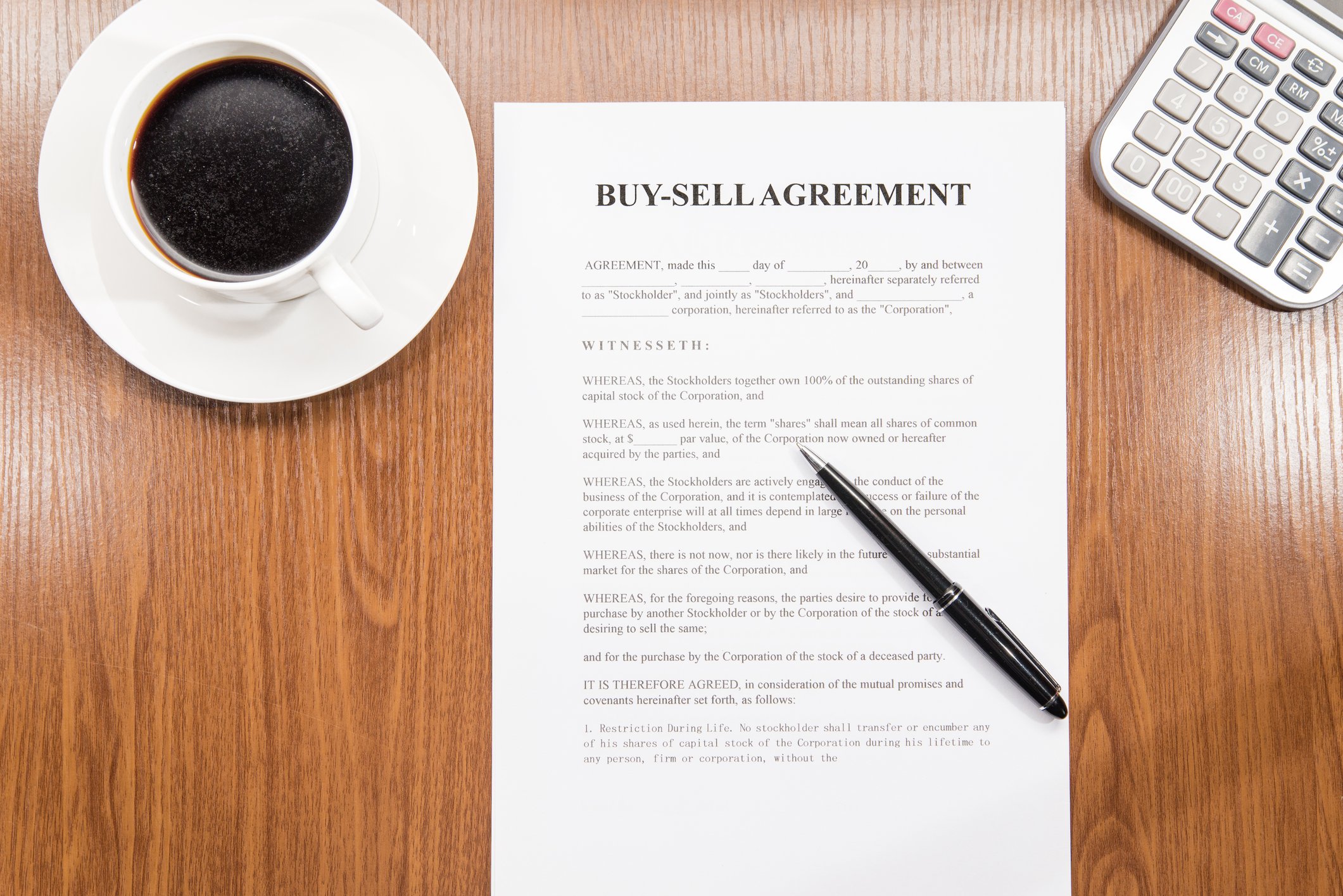By: Patrick Ungashick

Your company’s buy-sell agreement may be one of the most important legal documents in your life. It may not seem or feel that way most of the time, but if and when you need that agreement, it can either save you huge sums of money and incalculable stress and suffering, or it can cause you to lose huge sums of money and suffer incalculable stress. The outcome depends on whether or not your buy-sell agreement is well designed, or not. And, unfortunately many buy-sell agreements make one or more of several surprisingly common mistakes.
Quickly – What is a Buy-Sell Agreement
Buy-sell agreements (also commonly called shareholder agreements or member interest agreements) are legal documents that identify situations where ownership in the company may change hands, and then provide instructions on how to handle each case. The most familiar example is what happens upon the death of a partner. A buy-sell agreement usually requires the deceased owner’s heirs to sell the interest back to the company or the surviving owner(s) and at a specified price. This provision protects everybody: the deceased owner’s heirs receive a cash payout while the remaining owner(s) move forward without unwanted business partners. Most buy-sell agreements have provisions to address a shareholder’s death or other triggering events, such as retirement or severe disability.
Mistake #1 – Not Address the Sale of the Company
The first common mistake deals with a triggering event that many buy-sell agreements do not address—the sale of the company. If you wish to exit by way of sale, but one or more of your co-owners don’t want to sell, typically you cannot make them sell their portion of your company if your buy-sell agreement does not directly address this scenario. So, if a co-owner does not want to sell, then you might not be able to sell either. Most buyers will not want to acquire less than 100% of a company, particularly, when one of the owners was already opposed to the deal.
This reality often comes as an unwelcome surprise to owners seeking to exit. Some owners only learn their partners can block a sale when a potential buyer is standing in the doorway, and they discover that the buy-sell agreement does not address a sale. This omission leaves business co-owners at risk. To fill in the gaps, be sure your agreement includes “drag-along” and “tag-along” rights. These odd-sounding provisions bind co-owners together when selling the business to an outside buyer. The “drag-along” part requires that if a majority of the owner(s) decide to sell the company, all of the other owners are required to join the deal. This clause protects majority co-owners against minority co-owners holding up a sale. “Tag-along” is the reverse—majority co-owner(s) cannot sell their interest without tagging along and including the minority owners at the same price and terms. This stipulation protects minority co-owners from being left out of any deal. Together, these provisions bind all the co-owners into a single block and restore the majority owner’s control over the decision to sell the entire business.
If you wait until a buyer is standing in your doorway to address this, you run the serious risk of undermining or killing your deal.
Mistake #2 – Inadequate Valuation Method
The second common mistake is the buy-sell agreement uses a valuation method that produces an undesirable outcome or price, or both. Every buy-sell agreement will have some provision for determining the value of the company (or a partial interest in the company) upon a triggering event. There are several commonly used methods, with the three most common being:
- Defining a fixed price (“The company is worth $10 million”)
- Setting a formula (“The company is worth five times EBITDA”)
- Calling for and performing a formal business validation upon a triggering event
It is possible to define reasonable scenarios where any of these methods would be a good or a poor fit to accomplish what the business owners need. So, while some professional advisors will clearly advocate one approach over another, each method offers significant advantages and disadvantages, so there is no one-size-fits-all answer to which valuation method should be used.
Instead, owners (and their advisors) must do two things on this issue, both of which commonly get overlooked. First, the different valuation methods need to be discussed and carefully weighed to determine which fits best for your situation. This analysis rarely gets done, which is both dangerous and unnecessary because the question typically only takes a little time to evaluate and answer.
Second, the valuation method selected today needs to be reviewed and updated over time. Frustratingly, that rarely happens. Few owners get excited about “reviewing and updating my buy-sell agreement” as a project or task, for understandable reasons. However, over time, the valuation method used in your buy-sell agreement likely gets less and less current and relevant to meet your new reality. Then, one day, a triggering event occurs. At that point, it’s too late to make a change, and the obsolete valuation method or price can do more harm than good.
Mistake #3 – Bad Form
Exactly how does the buy-sell agreement work upon a triggering event is crucial, and there are different forms of agreements. For example, assume one owner dies. The buy-sell agreement calls for the deceased owner’s heirs or estate to sell that interest in the company, as you would expect. However, how will that purchase occur? For example, does the company purchase the deceased owner’s interest? Or, do the remaining owner(s) acquire the interest? Or can they split it? The buy-sell agreement’s form will answer this question, and the question typically has significant financial and tax considerations.
The different types of buy-sell forms typically include:
- Entity purchase (the company buys back the stock or units)
- Cross purchase (the remaining owners buy the stock or units)
- Wait-and-see (a combination of the two)
While there are exceptions, in most situations, a wait-and-see method offers the most advantages with few if any disadvantages. Ironically it seems to be the least commonly used form in our experiences. Under this method, the legal agreement does not predetermine who or what will be the buyer—the agreement will “wait and see.” The legal document usually accomplishes this by giving the business the first option to purchase the interest within a narrow window of time, such as thirty days. If this time period expires with no purchase, then the option shifts to specified individuals (such as remaining owners) to make the purchase. If these individuals do not purchase the interest within the second time period, then usually the agreement concludes that the third and final step is the business must purchase the interest. The wait-and-see sequence (easy to remember as Business-Owners-Business or BOB) gives owners and advisors flexibility to determine the best course of action upon a triggering event.
Avoiding Oops
Buy-sell agreements are critically important documents that, when triggered, can either cause a disaster or rescue you from one. You cannot afford to wait until a triggering event occurs, to discover that the agreement is lacking in some way.
If you have questions about your agreement, contact us for a complimentary and confidential consultation to discuss or review your existing agreement. Better to know about and fix a small oops now.








